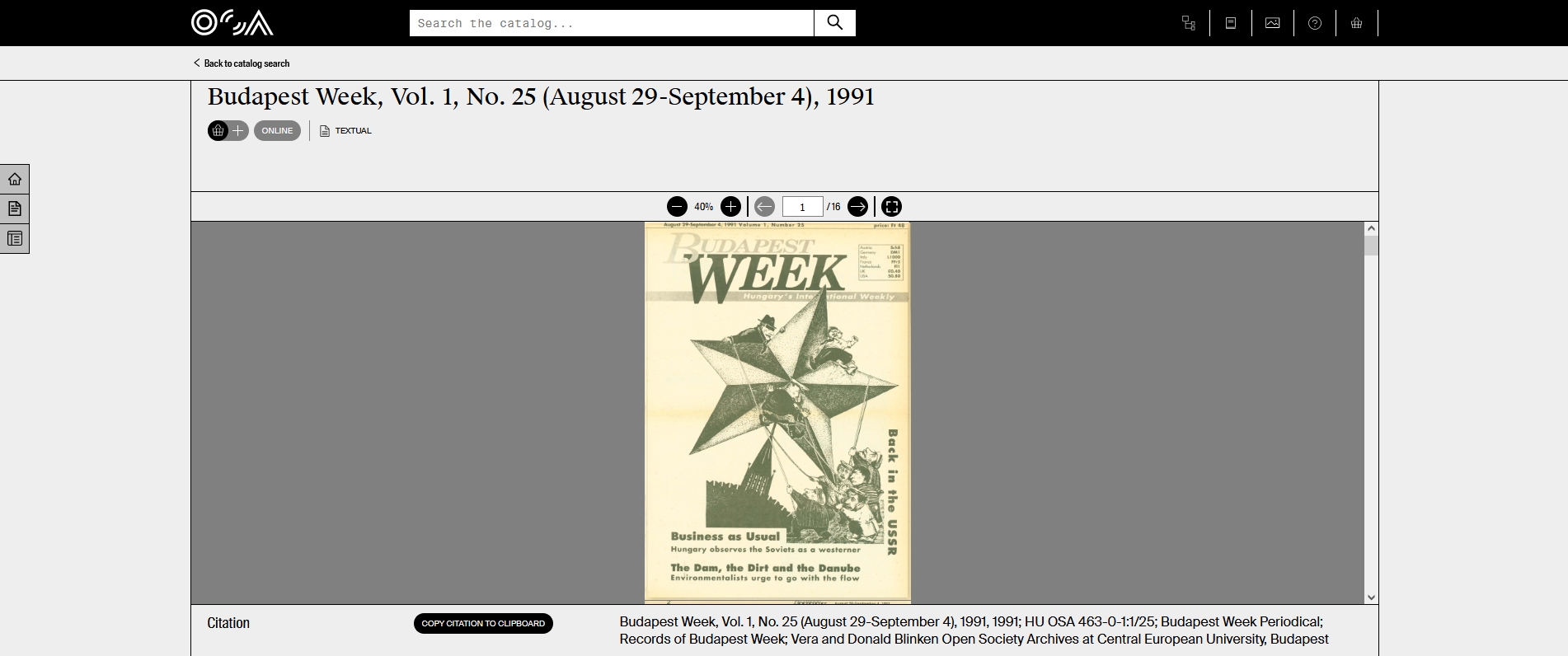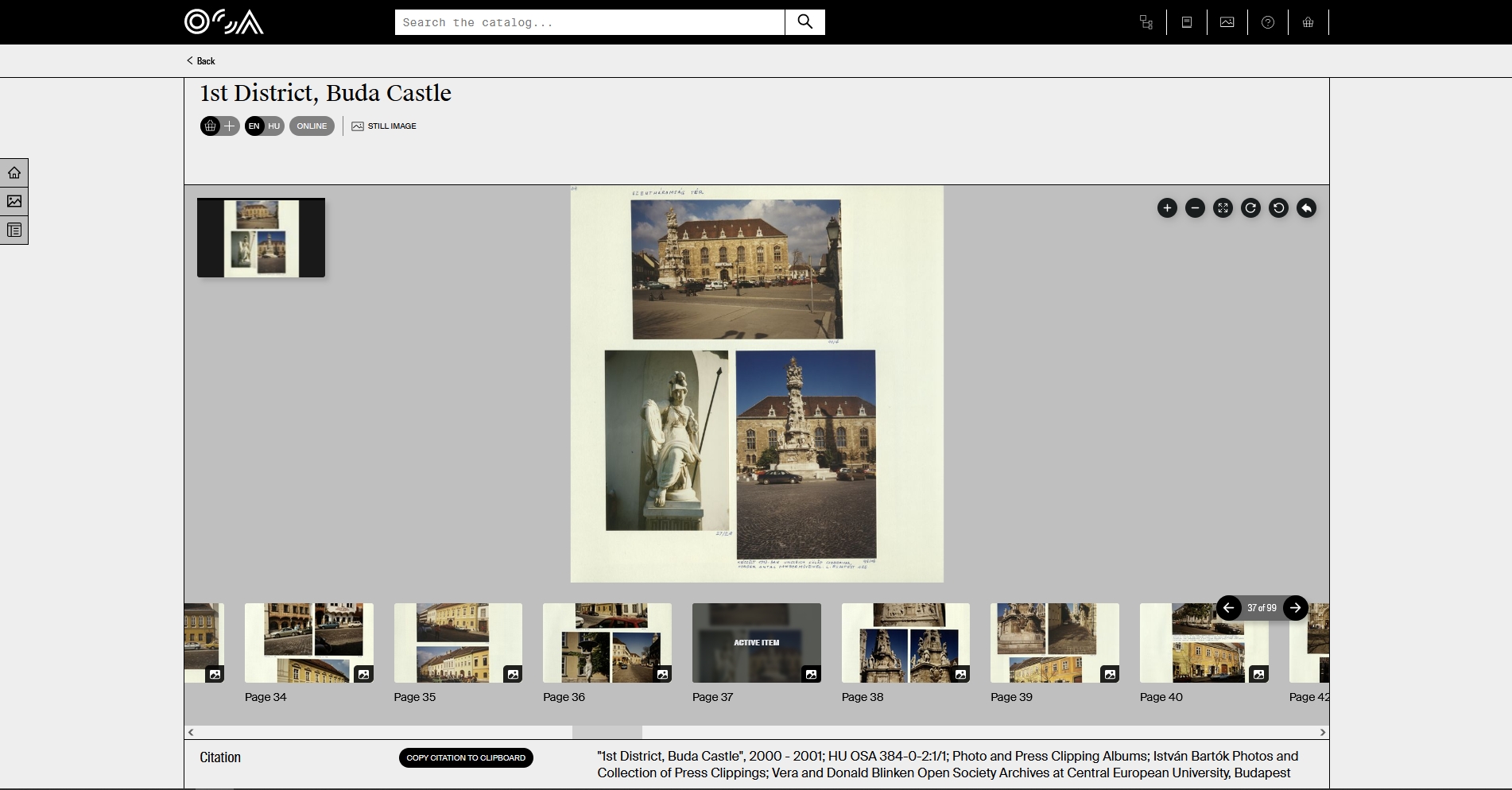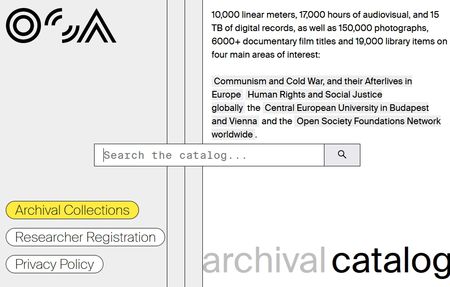Budapest is celebrating the 150th anniversary of its unification today. The Blinken OSA Archivum, a unit of CEU, has been operating in Budapest since 1995. During this time, our colleagues launched projects like Budapest100, Fortepan, or the Yellow Star Houses website. For the capital’s 150th birthday, we have prepared several gifts.
Today, we unveil our renewed online catalog, also including two new, Budapest-related collections: the archive of Budapest Week, a weekly magazine capturing the vibrant life of Budapest in the 1990s, and István Bartók’s street photographs of Budapest in the 2000s. Next week, the Verzió Film Festival, founded 20 years ago by the Archivum staff, devotes a special section to documentaries about the city.
As a result of a years-long process, the new archival catalog of the Blinken OSA Archivum is now available online, with a new design and numerous new features! One of the most fundamental upgrades is that digitized records can now be viewed simply within the catalog. This significant improvement enables us to grant online access to two new collections, still under processing, related to Budapest’s recent past. On the capital’s birthday, we are happy to present the records of Budapest Week, published between 1991 and 1999, and István Bartók’s photo albums from Budapest in the 2000s.
Budapest Week was the first English-language weekly newspaper in Hungary, published between 1991 and 1999. The first four volumes of the magazine have been digitized and are accessible in our catalog! The richly illustrated articles and readers’ letters reflect the vibrant life in Budapest following the 1989 regime change, the cultural and political discourses and developments, as well as the everyday life of the time. The vast majority of the paper’s journalists were young foreigners recently moved to Budapest who encountered the capital with fresh eyes. The collection, processed by Senior Librarian Katalin Dobó and her team, also includes the extensive photo archive of Budapest Week, from which we will publish exciting selections in the coming months.
 Volume 1, Issue 25 of Budapest Week.
Volume 1, Issue 25 of Budapest Week.
(HU OSA 463 Records of Budapest Week)
Dr. István Bartók (1929–2007), a renowned pathologist, turned to flaneuring and photography, his hobbies, after his retirement. He tirelessly roamed the streets of post-1989 Budapest; the walks turned into photos and the photos into photo albums. The carefully-organized and captioned images of streets, buildings, and facades document Budapest between 2000 and 2007, prior to the digital boom and Google Street View. The first two albums, capturing the Buda Castle District and Districts 5, 9, and 11, can now be browsed in the catalog! The archival processing of this “unique urban anatomical atlas” is undertaken by Archivist Balázs Leposa , while the albums are scanned in their original form by Archives Assistant Sándor Bejczy. More albums with other parts of the capital are coming soon.
 Ministry of Finance building on Szentháromság Square in István Bartók’s album.
Ministry of Finance building on Szentháromság Square in István Bartók’s album.
(HU OSA 384 István Bartók Photos and Collection of Press Clippings)
The Verzió International Human Rights Documentary Film Festival was founded in 2003, exactly 20 years ago, by the Blinken OSA Archivum staff. The festival celebrating its own anniversary between November 22–29 will feature a special section dedicated to the Budapest 150th memorial year, titled Budapest: Faces and Places. The Verzió team and film historian Balázs Varga selected film portraits of Budapest from the past 50 years; the program flashes moments and images (of memory)—visions of Budapest, versions of the city, places and people, all of which bring it somewhat closer to us. Screenings will also take place at the Blinken OSA Archivum.
Also today, we’re excited to release the new online catalog of the Blinken OSA Archivum! Responding to changes in the technological environment and user habits, our catalog has not only been given a new look, but has been enhanced with several new, essential features. According to catalogvs developer, Head of IT József Bóné, the most important of these are:
- Completely new design, thanks to SUBMACHINE.
- Digitized and born-digital textual, visual, or audiovisual records are no longer separated into an independent Digital Repository, but have been integrated into the catalog. Content migration from the former Digital Repository will continue in the coming days.
- In addition to on-site and e-mail registration, from now it is possible to register through the catalog. Also, registered researchers can request records through the catalog using a “shopping cart system.” (Remember to reserve a slot prior to your visit to the Research Room.)
- A detailed Researcher’s Guide.
- The new interface is responsive and mobile-friendly.


